Gaming Latency

How does network latency affect online gaming ?
Network latency, or "lag," is the delay in data transmission between a player's device and the gaming server. This delay can significantly impact online gaming by affecting gameplay smoothness, multiplayer interaction, game design, and user experience. High latency can cause input delay, movement jitter, synchronization issues, communication delays, and disconnections, making games frustrating and unplayable. In contrast, low latency offers responsive controls, smooth movement, fair play, effective communication, and an immersive experience. Game developers use optimization strategies like client-side prediction and server-side interpolation to minimize latency's effects. Managing network latency is crucial for maintaining a high-quality online gaming environment.

Is it better to use a wired or wireless connection for gaming consoles ?
When it comes to gaming consoles, the choice between a wired and wireless connection can significantly impact your gaming experience. Wired connections typically offer faster speeds, lower latency, and more stable connections but limit mobility and can create a cluttered setup. Wireless connections allow for increased mobility and a cleaner setup but may have slower speeds, higher latency, and potential interference from other devices. The choice between a wired and wireless connection depends on your specific needs and preferences, such as the type of games you play and the layout of your home.
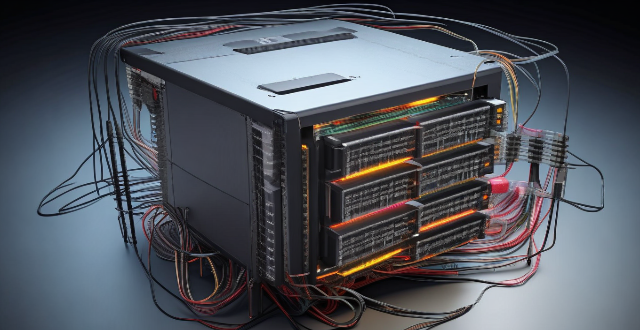
What is considered high network latency ?
High network latency is a delay in data transmission that can negatively affect the performance of applications and services. It is influenced by various factors such as distance, congestion, hardware performance, bandwidth limitations, QoS settings, and interference. The definition of high latency varies depending on the context, but it is generally considered to be any delay that significantly impacts the usability of applications or services. Identifying high network latency can be done using tools like ping tests or traceroute commands. Mitigating high network latency can involve upgrading hardware, increasing bandwidth, optimizing QoS settings, reducing physical distance, and minimizing interference.

What is network latency and how does it impact user experience ?
Network latency is the delay in data transmission over a network, influenced by factors such as distance, congestion, and hardware limitations. It negatively impacts user experience in online gaming, video conferencing, streaming services, web browsing, and online shopping, leading to frustration and reduced engagement. Reducing latency through optimized network infrastructure can enhance user satisfaction.

How does network congestion impact latency ?
The impact of network congestion on latency can be significant and can have a negative effect on the overall performance of the network. This can include increased transmission time, higher drop rates, reduced bandwidth availability, and impacts on application performance. It is important for network administrators to monitor and manage network traffic to minimize the impact of congestion on latency and ensure that applications continue to function properly.
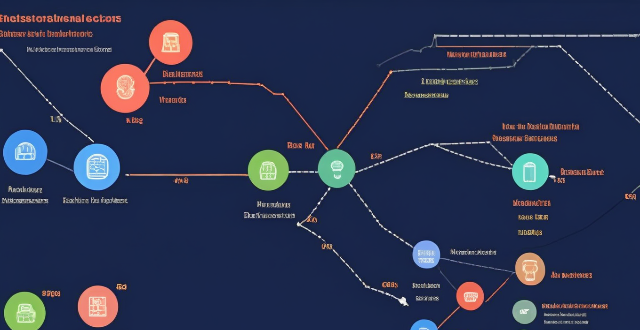
Why does my network latency fluctuate throughout the day ?
The article explores various reasons for fluctuations in network latency, including network congestion due to high traffic volume, large file transfers, and server load; physical distance and infrastructure issues related to geographical location, network hardware, and ISP differences; and local network conditions such as wireless interference, multiple devices sharing bandwidth, and malware or viruses affecting performance. It suggests ways to minimize latency fluctuations, like upgrading equipment, optimizing Wi-Fi setup, scheduling large downloads during off-peak hours, using wired connections, and scanning for malware.

Is there a way to measure network latency ?
Measuring network latency is crucial for understanding a network's performance. The ping test, traceroute, and online tools are methods to measure latency. Ping tests estimate the round-trip time, while traceroute identifies bottlenecks in the network path. Online tools provide visual representations of network performance.

What causes network latency ?
Network latency is a critical metric in networking, referring to the delay that data experiences when traveling between two points in a network. Understanding the causes of network latency is essential for optimizing productivity, collaboration, and user experience in today's digitally reliant world. The article delves into the various factors contributing to network latency and why it matters.

Will upgrading my broadband improve my online gaming experience ?
Upgrading broadband can enhance online gaming by reducing latency and increasing speeds, stability, and bandwidth, leading to smoother gameplay and fewer disruptions. However, it is important to consider costs, hardware compatibility, provider options, and potential trial periods before deciding on an upgrade.
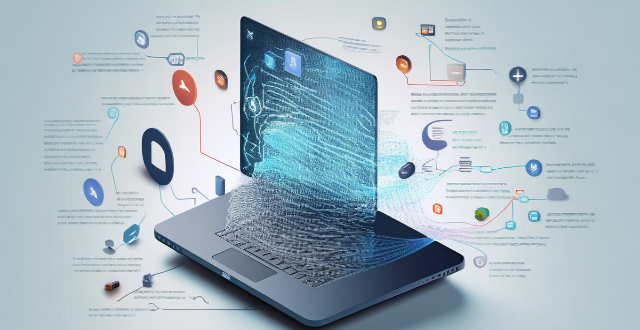
What is the latest advancement in mobile communication technology ?
The latest advancement in mobile communication technology is the **5G network**, promising faster speeds, lower latency, and more reliable connections. Key features include increased speed, reduced latency, improved reliability, enhanced coverage, and network slicing. Benefits of 5G technology include faster download and upload speeds, better video call quality, improved IoT connectivity, enhanced gaming experience, and autonomous vehicles.

Are there any tools to help diagnose network latency issues ?
Network latency issues can be frustrating and detrimental to the performance of applications and services. Fortunately, there are several tools available that can help diagnose and troubleshoot these issues. Some popular tools used for network latency diagnosis include Ping, Traceroute, MTR (My Traceroute), Netstat, Tcpdump, and Wireshark. Each tool has its own strengths and weaknesses, so it's important to choose the right one based on your specific needs and circumstances. By using these tools effectively, you can identify and resolve latency problems quickly and efficiently.
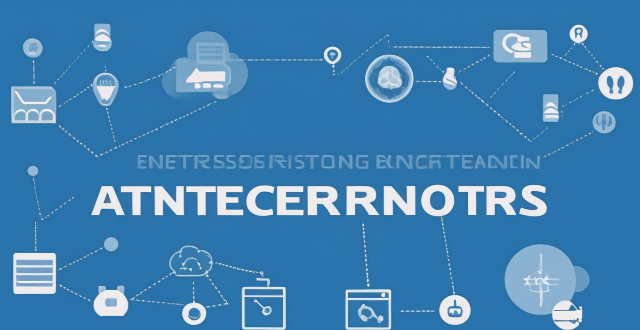
Can upgrading my internet package reduce network latency ?
The text discusses the topic of network latency and whether upgrading an internet package can reduce it. It outlines various factors affecting network latency, including ISP infrastructure, type of connection, location, and network devices. The text then explores different upgrade scenarios, such as moving from DSL to fiber optic or increasing bandwidth, and their potential impact on reducing latency. It concludes that while upgrading can potentially reduce latency, the specifics of each situation should be considered before deciding to upgrade.

What is the significance of server location in optimizing network performance ?
Server location is crucial for optimizing network performance, as it affects latency, network reliability, and data transfer times. By locating servers closer to users, organizations can reduce the distance that data has to travel, resulting in fewer hops and less time spent in transit. This leads to reduced latency, faster load times for websites and applications, and improved video conferencing or gaming experiences. Additionally, having servers located near users can help reduce network congestion and improve overall network reliability. Therefore, organizations should consider server location when designing their networks and choosing hosting providers.

What is 5G network and how does it work ?
The 5G network is the fifth generation of mobile networks, offering significant improvements in speed, capacity, and responsiveness over its predecessor, 4G. It utilizes higher frequencies, advanced antenna technology, and reduced latency to provide enhanced mobile broadband, lower latency, increased reliability, massive IoT connectivity, and improved energy efficiency. The rollout of 5G worldwide is expected to enable new applications and services that were not possible with previous network technologies.

Can regular exercise be an effective way to prevent excessive online gaming ?
Regular exercise can help prevent excessive online gaming by improving mental health, increasing self-control, enhancing social interaction, and improving sleep quality. While it may not completely eliminate gaming behaviors, it serves as a valuable tool in promoting overall well-being and reducing reliance on online gaming as a primary source of entertainment and social interaction.

How can sports and physical activities help prevent internet gaming addiction ?
Sports and physical activities can help prevent internet gaming addiction by offering alternative forms of entertainment, promoting mental and physical well-being, and fostering social connections. Strategies for incorporating sports include setting fitness goals, choosing enjoyable activities, and involving family or friends to make it a sustainable part of one's lifestyle.
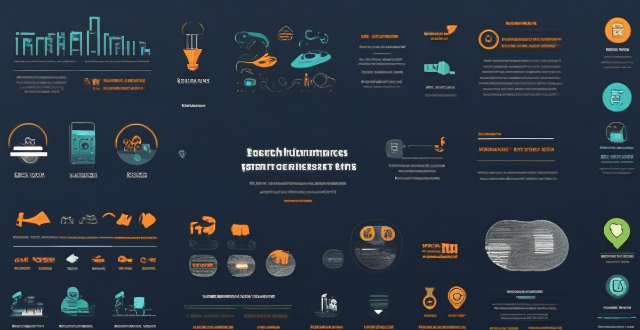
How does engaging in sports impact the likelihood of developing a gaming disorder ?
Engaging in sports can significantly reduce the likelihood of developing a gaming disorder by improving mood and mental health, enhancing sleep quality, increasing socialization, promoting peer pressure and influence, limiting availability for gaming, and fostering a goal-oriented mindset. Maintaining a balanced lifestyle with various activities beyond gaming is essential for overall well-being and preventing potential addictions.

How can I reduce network latency in my home ?
To reduce network latency in your home, check your internet speed, upgrade your router, use wired connections, optimize router settings, limit bandwidth hogs, place your router strategically, use a Wi-Fi extender or mesh network, and close unused applications and tabs.
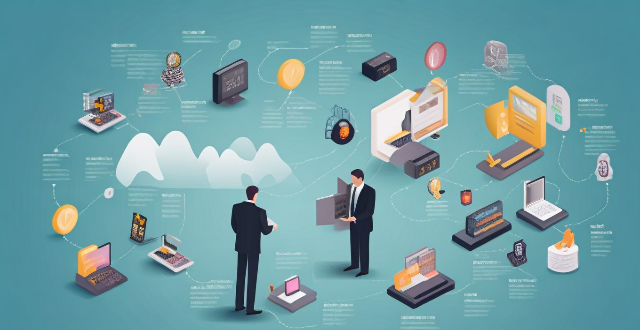
What impact has 5G technology had on the telecommunications industry ?
The advent of 5G technology has revolutionized the telecommunications industry, offering faster speeds, lower latency, and increased capacity. Key impacts include enhanced mobile broadband, ultra-reliable low-latency communications, and massive Internet of Things connectivity. These advancements have led to changes in network infrastructure, service innovation, economic growth, and social development. However, challenges such as coverage limitations, compatibility issues, spectrum allocation, and security concerns need to be addressed. The full potential of 5G is yet to be realized but holds immense promise for positive change across various sectors.

How can schools incorporate sports programs to combat gaming addiction among students ?
Schools can combat gaming addiction among students by incorporating sports programs, promoting physical activity, and mental well-being. Strategies include promoting sports programs, offering a variety of sports, integrating sports into the curriculum, organizing sports events, providing access to facilities and equipment, encouraging participation in extracurricular sports clubs, educating students about the benefits of sports, and collaborating with parents and community organizations.

What role does team sports play in mitigating the risks associated with compulsive gaming ?
Team sports can mitigate the risks associated with compulsive gaming by encouraging healthy social interactions, increasing physical activity, developing time management skills, and reducing stress and anxiety.

Are there specific types of sports that are more effective in preventing internet gaming addiction ?
The article discusses the issue of internet gaming addiction and how sports can be an effective solution. It explains the benefits of physical activity, including improved health and social connections, which can help prevent addiction. The article then lists four types of sports that are particularly effective in preventing addiction: outdoor adventure sports, team sports, individual sports with goals, and yoga/mindfulness practices. Overall, the article emphasizes the importance of engaging in physical activities to promote a healthy lifestyle and combat addiction.

Is there a correlation between the amount of time spent on sports and the incidence of gaming addiction ?
The text discusses the potential correlation between gaming addiction and excessive time spent on sports, considering displacement theory, common underlying factors, lack of social support, and cultural influences. It highlights the need for further research to understand this relationship better and develop prevention and treatment strategies for both conditions.

How fast is fiber optic broadband compared to other types of internet connections ?
Fiber optic broadband is the fastest internet connection type, offering significantly faster speeds and more reliable performance compared to DSL, cable, and satellite connections. Fiber optic broadband has very low latency, making it ideal for real-time applications like online gaming and video conferencing. It is also less susceptible to interference and signal degradation, resulting in more stable and consistent performance. Overall, fiber optic broadband is well-positioned to handle increasing bandwidth requirements due to its scalability and capacity for faster speeds.
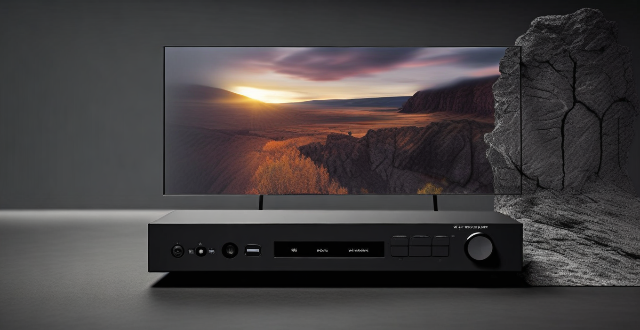
What are the effects of network latency on video conferencing ?
Network latency can have significant impacts on video conferencing, including audio and video delays, reduced quality of service, increased frustration and disruptions, and missed opportunities for collaboration. To minimize these effects, it is important to ensure stable and reliable internet connections and use high-quality software and hardware.

How will 5G change the entertainment industry ?
The advent of 5G technology is set to revolutionize various sectors, including the entertainment industry. With its faster speeds, lower latency, and increased connectivity, 5G promises to transform how content is created, distributed, and consumed. In this article, we will explore the potential changes that 5G can bring to the entertainment industry. One of the most significant changes that 5G will bring to the entertainment industry is an enhanced streaming experience. With 5G's faster download and upload speeds, users can enjoy high-quality video and audio content without buffering or lag issues. This means that viewers can watch their favorite movies, TV shows, or live events in real-time, with no interruptions. Moreover, 5G's low latency ensures that there are minimal delays between the broadcaster and the viewer, making it ideal for live streaming events such as sports games or concerts. Another area where 5G can have a profound impact is in virtual reality (VR) and augmented reality (AR) experiences. These technologies require high bandwidth and low latency to function effectively, which makes them perfect candidates for 5G networks. With 5G's capabilities, VR and AR experiences can become more immersive and realistic than ever before. For example, users could attend virtual concerts or sporting events from the comfort of their homes, feeling as if they were actually there. Additionally, AR applications could be used to enhance traditional media by adding interactive elements to books, magazines, or even billboards. Cloud gaming is another area where 5G can make a significant difference. With 5G's fast speeds and low latency, gamers can play high-quality games without needing powerful hardware devices. Instead, they can stream games directly from the cloud, using their smartphones, tablets, or even smart TVs as controllers. This means that gamers no longer need expensive consoles or PCs to enjoy their favorite games; they only need a stable internet connection and a compatible device. Moreover, cloud gaming opens up new opportunities for developers to create more complex and immersive games without worrying about hardware limitations. Finally, 5G can also enable more interactive content creation and consumption. With 5G's increased connectivity and faster speeds, creators can produce interactive videos, podcasts, or other forms of media that allow viewers to engage with the content in real-time. For example, viewers could participate in polls or quizzes during live shows or interact with characters in a movie through AR features on their devices. This level of interactivity not only enhances the viewing experience but also creates new opportunities for advertisers looking to reach engaged audiences.

How fast is the 5G network compared to 4G ?
The fifth generation of wireless systems (5G) is significantly faster than the fourth generation (4G). The speeds achievable with 5G can vary depending on several factors, including network congestion, device capabilities, and the specific technology implementation. However, here are some general comparisons to give you an idea of the differences: - Download Speeds: Typical download speeds for 4G can range from 10 to 50 Mbps (Megabits per second), while with 5G, download speeds can start around 100 Mbps and can go up to multiple Gbps (Gigabits per second), with peak theoretical speeds reaching as high as 20 Gbps. - Latency: Latency in 4G networks typically falls between 30 to 50 milliseconds, while one of the major improvements with 5G is its reduced latency, which can be as low as 1 millisecond. - Bandwidth and Capacity: While 4G offers sufficient bandwidth for many current applications, it can struggle under heavy loads or during high-traffic events, while 5G is designed to handle much higher capacity and density of connections, making it better suited for crowded areas and large-scale deployments. With faster speeds and lower latency, streaming services can offer higher resolutions with less buffering, meaning smoother playback for 4K and even 8K video content. 5G's low latency makes it ideal for Augmented Reality (AR) and Virtual Reality (VR) experiences that require real-time interactions without delays. 5G can connect many more devices simultaneously than 4G, facilitating the growth of smart cities, autonomous vehicles, and other IoT applications. Improved network reliability and coverage mean fewer dropped calls and better performance in rural or remote areas. In summary, while 4G has been a transformative technology that has enabled mobile internet access on a large scale, 5G promises to take connectivity to the next level with speeds that are potentially dozens of times faster and latency that is nearly imperceptible. These advancements open up new possibilities for various industries and technologies that were not feasible with 4G.

How does satellite communication compare to other forms of communication ?
Satellite communication offers global coverage, high capacitySatellite communication offers global coverage, high capacity higher latency and initial costs and reliability but has higher latency and initial costs compared to terrestrial and wireless communication. Terrestrial communication provides lower latency and moderate reliability at a lower cost, while wireless communication offers convenience and portability at a variable cost. Satellite communication is suitable for remote areas and sensitive applications due to its security features.

What types of applications will benefit most from Wi-Fi 6 technology ?
Wi-Fi 6, also known as 802.11ax, is the latest wireless networking standard designed to enhance speed, efficiency, and performance in high-density network environments. This technology offers several improvements over its predecessors, making it particularly beneficial for certain types of applications. Let's explore the applications that stand to gain the most from Wi-Fi 6 technology. Improved Speed and Throughput: - Lower Latency: Wi-Fi 6 reduces latency, providing a smoother gaming experience. - Higher Data Rates: Faster top speeds ensure quick downloads and seamless online multiplayer. - Increased Bandwidth: Wi-Fi 6 supports more data-intensive VR/AR experiences without lag. - Target Wake Time (TWT): Reduces power consumption, extending device battery life during prolonged use. - Improved Simultaneous Transmission: Wi-Fi 6 allows multiple devices to communicate with the router at once without slowing down. - Better Quality of Service (QoS): Prioritizes bandwidth-intensive video conferencing traffic over less critical data. Enhanced Network Efficiency: - Greater Device Capacity: Wi-Fi 6 can handle more connected devices without performance drops. - OFDMA Technology: Enables efficient data transmission to multiple devices simultaneously. - Spatial Reuse: Reduces network congestion by allowing devices to transmit data even when others are occupying the same channel. - Uplink and Downlink MU-MIMO: Supports simultaneous two-way communication with multiple devices, boosting office network efficiency. - Increased Connection Density: Wi-Fi 6 can manage a higher number of users in confined areas without compromising speed. - BSS Coloring: Minimizes interference between networks operating on the same frequency. Enhanced Security Features: - WPA3 Security Protocol: Integrates the latest security standards to protect sensitive corporate data. - Enhanced Access Controls: Offers more robust user and device authentication mechanisms. - Improved Encryption: Wi-Fi 6 includes stronger encryption methods for classified communications. - Secure Network Design: Supports the creation of secure, isolated networks for sensitive operations. Future-Proofing Infrastructure: - Scalability: Wi-Fi 6's design accommodates the rapid expansion of IoT devices. - Energy Efficiency: Optimized for low-power devices, extending the lifespan of IoT sensors and devices. - Increased Uplink Capacity: Better support for cloud backups and data synchronization tasks. - Optimized Channel Utilization: Wi-Fi 6 maximizes spectrum usage, enhancing overall cloud service performance.

How does Wi-Fi 6 perform in high interference environments ?
Wi-Fi 6, the latest wireless networking standard, offers several advantages over its predecessors in high interference environments. Key features include improved spectral efficiency, target wake time, BSS coloring, and spatial reuse. These features result in lower latency, increased throughput, better energy efficiency, and scalability. Wi-Fi 6 is well-suited for handling a large number of connected devices while maintaining low latency and high throughput, making it an ideal choice for high-density network environments like stadiums, airports, and apartment buildings.